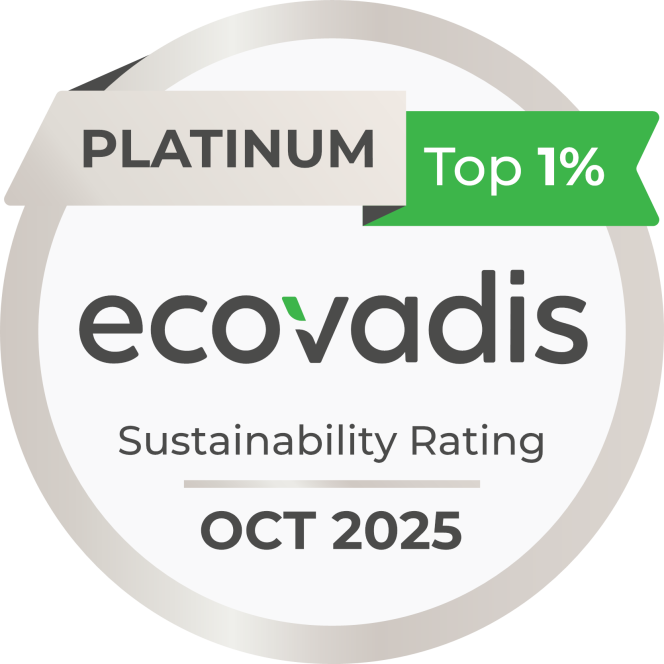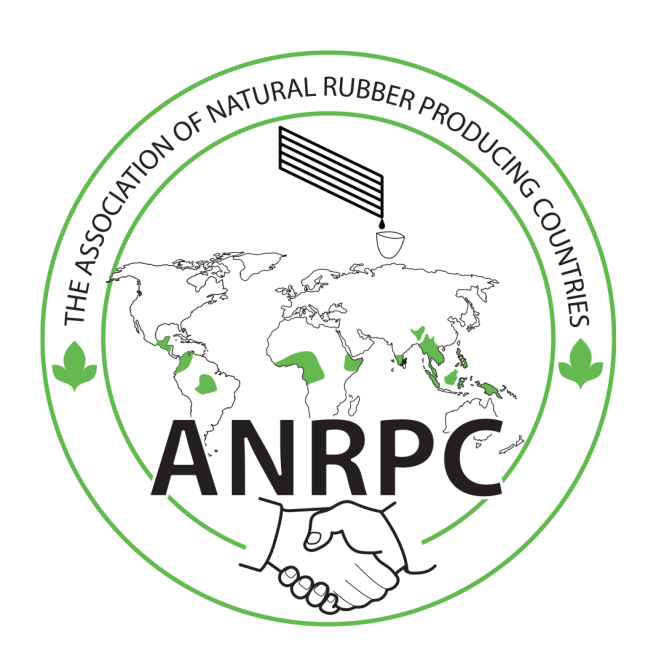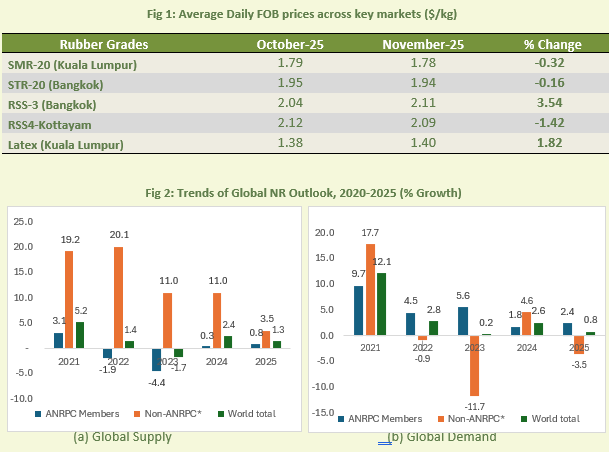EPDM Elastomer in India
- By 0
- April 22, 2020

Ethylene propylene copolymer (EPM), or a terpolymer with a diene (EPDM), is a type of synthetic rubber, which is characterised by a wide range of applications. The ‘E’ letter refers to ethylene, ‘P’ to propylene and ‘D’ to diene and ‘M’ refers to a kind of monomer with respect to its classification in ASTM standard D-1418. The M class includes rubbers having a saturated chain of the polymethylene type.
EPDM rubber, therefore, is a terpolymer of ethylene,propylene and a diene-component and the Dienes currently used in the manufacture of EPDM rubbers are dicyclopentadiene (DCPD), ethylidene norbornene (ENB) and vinyl norbornene (VNB). Hexadiene (HD) is rarely being used in making EPDM these days.
The ethylene and propylene monomers combine to form a chemically saturated, stable polymer backbone providing excellent heat, oxidation, ozone and weather aging. A third, nonconjugated diene monomer is terpolymerized in a controlled manner to maintain a saturated backbone and place the reactive unsaturation in a side chain available for vulcanization or polymer modification chemistry.
The two most widely used diene termonomers are primarily ethylidene norbornene (ENB) followed by dicyclopentadiene (DCPD).Each diene incorporates with a different tendency for introducing long chain branching or polymer side chains that influence processing and rates of vulcanization by sulfur or peroxide cures. Generally, ENB type is better heat resistant than DCPD type. Peroxide cure EPDM, boosted with coagents provide better heat resistant than sulphur/accelerator cured EPDM.
This polymer is the most water resistant rubber available, and this resistance is maintained to high temperatures (up to 180°C in steam with peroxide cured compound). The highest temperature resistance is achieved by using peroxide cured grades. It is thus used extensively under water cables (sea water as well). Before EPDM, Chloprene rubber (CR) was extensively used wherever weather resistance properties were important. Upon discovery of EPDM in 1963 , it quickly took over existing weather resistant market of Chloroprene rubber (CR).

Ethylene-propylene-diene rubber (EPDM) is one of the most widely used and highly-developing synthetic rubbers. EPDM business will reach US 6.9 b $ by end 1Q,2020. Currently, their total capacity is about 1.65m ton/ Yr. and it takes the third place in the world synthetic rubber consumption after styrene-butadiene and butadiene rubber. As of August 2019, there are 15 big companies in the world that produce EPDM.
In order to present a competitive landscape of the global EPDM market, key market players are witnessed as LANXESS AG (Germany), ExxonMobil Chemical (U.S.), Dow Elastomer (U.S.), Mitsui Chemical (Japan), Kumho Polychem (South Korea), Lion Copolymer (U.S.), Versalis (Italy), JSR Corporation (Japan), Jilin Chemical (China), SK Global Chemical (Japan), Nizhnekamsk Neftekhim Inc (Russia), and Sumitomo Chemical Company Ltd (Japan) have been profiled. With a huge number of EPDM manufacturers worldwide and with a number of different grades by each of these manufacturers, EPDM is one of the versatile elastomer in India now . EPDM has different grades in the industry based on :
- Mooney viscosity
- Type of diene content
- Percentage mole of diene content and
- Ethylene propylene ratio
- Bimodal Type

With current increase in EPDM uses , India now badly need EPDM manufacturing plant to protect its foreign currency. Another important application India need is compulsory application of EPDM based Roofing in rainy states to protect against damage of multistory buildings (Mumbai). EPDM has been used as a covering to waterproof roofing in western countries, Japan, China, Taiwan and countries in South East Asia. Major applications of EPDM are :
- Other than automobile glass-run channels, EPDM is also used in radiators, garden and appliance hose, tubing, pond liners, washers, belts, electrical insulation, vibrators, O-rings, solar panel heat collectors and speaker cone surrounds.
- It is also used as a medium for water resistance in electrical cable-jointing, geomembranes, rubber mechanical goods, plastic impact modification, thermoplastic etc.
- EPDM is used as blends in Butyl rubber for Inner-tube application.
- EPDM is used in PC side wall , black or white. Extensively used in color BC tyres for children.
- EPDM roofing is very popular in developed countries.
- With EPDM Roofing membranes rainwater harvesting is also very popular. EPDM roofing does not pollute the run-off rainwater.
Rubber roofing has the benefit that it does not pollute the runoff rain water. Water could be used for personal sanitation / gardenining / hygiene. White oil may be the best processing oil. They are manufactured in the form of calendared sheet and covered with a plastic such that its application on floor is easy upon removal of plastic and then they are applied in roof floor. EPDM rubber sheet can be installed either fully adhered, mechanically attached or ballasted, with the seams of the roofing system sealed with liquid adhesives or specially formulated tape. EPDM Waterproof Roofing system has delivered more than six decades of commercial roofing success by building upon a heritage of innovation in rubber polymer technology.
Dr Samir Majumdar, Rubber Consultant (India & Asia pacific), has served in leading tyre companies like JK Tyre, Kyoto Japan Tire, among others. He was technical and R&D head (Asia Pacific) in ExxonMobil. He has authored several research papers and technical books. smajumdar501234@yahoo.co.in
Birla Carbon Secures Platinum Medal In EcoVadis Sustainability Rating
- By TT News
- December 27, 2025

Birla Carbon, a leading global manufacturer and supplier of high-quality carbon materials, has been awarded the prestigious Platinum sustainability rating by EcoVadis, ranking it within the top one percent of all assessed companies globally. This honour recognises the firm’s enterprise-wide leadership in integrating sustainability across its operations, innovation and value chain.
The evaluation specifically commended its strong performance across four key areas: Environment, Labor & Human Rights, Ethics and Sustainable Procurement. This achievement is further validated by extensive third-party certifications, with over 75 percent of operations certified to international standards including ISO 14001, ISO 50001, ISO 45001, SA8000 and ISO 27001, underscoring the consistency and strength of its sustainability management systems.
John Loudermilk, President and CEO, Birla Carbon, said, “This Platinum rating reflects the steady progress we are making in embedding sustainability at the core of our business. Our growth strategy is geared towards delivering sustainability through innovation, operational excellence and responsible practices across our global footprint. We continually invest in sustainability and circularity-driven processes, keeping our operations sustainably efficient while creating long-term value for our customers, partners, communities and employees. Our sustainability strategy, Share the Future, serves as a roadmap to a sustainable future and guides our actions towards our aspiration of reaching net zero carbon emissions over the next 25 years. Being recognised among the top one percent of companies globally is a testament to the commitment of our teams worldwide.”
Yokohama Rubber And RAOT Hold 10th Joint Seminar For Thai Natural Rubber Farmers
- By TT News
- December 26, 2025
The Yokohama Rubber Co., Ltd. recently conducted an educational seminar for local natural rubber farmers in partnership with the Surat Thani branch of the Rubber Authority of Thailand (RAOT). This marked the 10th such event since the programme's inception in 2020, involving 50 local farm households. Attendees received complimentary fertiliser, developed with RAOT's expertise, as part of the ongoing support.
The seminar curriculum covered essential agricultural topics, including soil and plant nutrition, correct fertiliser application and methods to prevent contamination in natural rubber. To commemorate the 10th seminar, the programme was expanded to include guest speakers from local government, police and healthcare. These guests addressed broader community and safety issues, such as human rights for foreign and minority workers, road safety and occupational health. A particular focus was placed on practical well-being, with the local hospital director offering guidance on preventing injuries during tree tapping and managing encounters with poisonous insects.
Post-event feedback from participants was overwhelmingly positive. Many expressed that they gained new, systematic knowledge about cultivation practices, despite years of experience. Several noted that hearing directly from a rubber manufacturer reinforced the critical importance of purity in their product. Others found the health and safety advice immediately useful. The engaging delivery of the seminar was also highlighted, with one farmer mentioning a desire to recommend the valuable and enjoyable experience to peers.
This initiative is a direct implementation of a memorandum of understanding (MoU) signed between Yokohama Rubber and RAOT in January 2020. The MoU focuses on economic support for farmers and improving supply chain traceability, aligning with the company's Procurement Policy for Sustainable Natural Rubber. Hosted in the region where Yokohama’s Thai natural rubber processing subsidiary, Y.T. Rubber Co., Ltd. (YTRC), operates, the seminar exemplifies the policy's guideline to support small-scale farmers within the supply chain.
As a founding member of the Global Platform for Sustainable Natural Rubber (GPSNR), Yokohama Rubber is committed to advancing these principles. The company views such efforts as integral to creating shared value under its sustainability slogan, ‘Caring for the Future’, and contributes to broader United Nations Sustainable Development Goals through the promotion of sustainable raw material procurement.
Rubber Research Institute Of India Develops Latex-Based Paint
- By TT News
- December 26, 2025
In a significant event for India’s rubber sector, Minister for Ports, Co-operation & Devaswoms V N Vasavan inaugurated a ceremony for the transfer of innovative latex-based paint technology. This eco-friendly paint, a product derived from natural rubber, was developed by the Rubber Products Incubation Centre of the Rubber Research Institute of India. The technology was formally handed over to Kerala Paints Industries Private Ltd., with the Minister highlighting the event's historic nature for launching a sustainable product and stressing the importance of increasing domestic natural rubber consumption to improve grower returns.
Rubber Board Executive Director M Vasanthagesan outlined the centre's role in converting research into market-ready goods, reaffirming the Board's dedication to creating innovative, value-added rubber products. The gathering also heard remarks from several key figures, including Mahatma Gandhi University's K V Dayal, RRII Director Dr Debabrata Ray, RRII Senior Scientist Dr Shera Mathew and Kerala Paints' Managing Director Midhun P Pullumettel.
- Association of Natural Rubber Producing Countries
- ANRPC
- Natural Rubber
- Monthly NR Statistical Report
ANRPC Publishes Monthly NR Statistical Report For November 2025
- By TT News
- December 22, 2025

The Association of Natural Rubber Producing Countries (ANRPC) has released its Monthly NR Statistical Report for November 2025, providing an overview of key developments in the global natural rubber sector.
While a modest rise in global production of 1.3 percent is anticipated for the year, this follows a revised, lower output forecast for Indonesia. Concurrently, worldwide demand is projected to grow by a more subdued 0.8 percent, bolstered by an upward adjustment in Indonesia's own consumption figures.

Recent price pressures have emerged due to this combination of uncertain supply, influenced by unpredictable weather patterns and generally muted demand. However, there are sporadic positive indicators, including noticeable recoveries within the tyre sector across some regional markets.







Comments (0)
ADD COMMENT